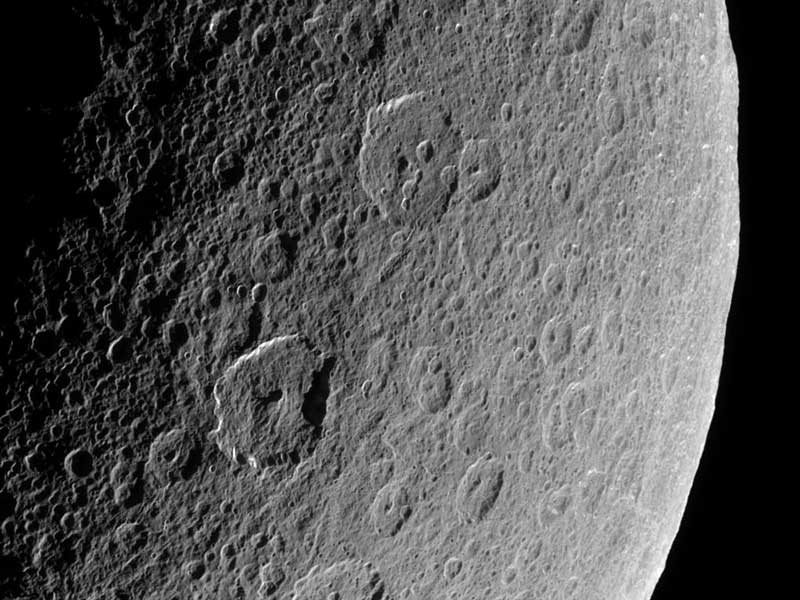Explanation: Saturn's ragged moon Rhea has one of the oldest surfaces known. Estimated as changing little in the past billion years, Rhea shows craters so old they no longer appear round their edges have become compromised by more recent cratering. Like Earth's Moon, Rhea's rotation is locked on Saturn, and the above image shows part of Rhea's surface that always faces Saturn. Rhea's leading surface is more highly cratered than its trailing surface. Rhea is composed mostly of water-ice but is thought to have a small rocky core. The above image was taken by the robot Cassini spacecraft now orbiting Saturn. Cassini swooped past Rhea two months ago and captured the above image from about 100,000 kilometers away. Rhea spans 1,500 kilometers making it Saturn's second largest moon after Titan. Several surface features on Rhea remain unexplained including large light patches.
1999 2000 2001 2002 2003 2004 2005 2006 2007 2008 2009 2010 2011 2012 2013 2014 2015 2016 2017 2018 2019 2020 2021 2022 2023 2024 2025 |
Yanvar' Fevral' Mart Aprel' Mai Iyun' Iyul' Avgust Sentyabr' Oktyabr' Noyabr' Dekabr' |
NASA Web Site Statements, Warnings, and Disclaimers
NASA Official: Jay Norris. Specific rights apply.
A service of: LHEA at NASA / GSFC
& Michigan Tech. U.
|
Publikacii s klyuchevymi slovami:
Saturn - Rhea - crater - Saturn - krater
Publikacii so slovami: Saturn - Rhea - crater - Saturn - krater | |
Sm. takzhe:
Vse publikacii na tu zhe temu >> | |
